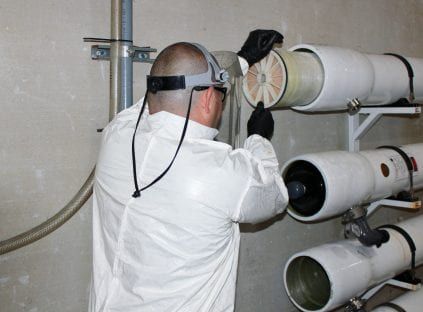Ask the Membrane Expert- replace versus cleaning
Published on by Water Network Research, Official research team of The Water Network in Case Studies
When does it make sense to clean elements, and when is replacement the only option in high purity applications?

In the case of high purity applications, the main criterion for clean vs. replace is salt passage. Any increase in salt passage to the demineralizers can be enough financial justification for replacement. As an example, even a slight decrease in salt rejection from 99.6% to 99.2% may not seem troublesome to someone treating brackish water for a potable application.
But in a high purity application that generally employs mixed bed demineralizers to polish the RO permeate, the amount of salts that have to be removed by the demineralizer system would double, which in turn doubles the number of regeneration cycles. This corresponds to doubling of acid, caustic, and neutralization costs would drive the decision of whether to replace or clean.
Increased salt passage accompanied by increased differential pressure, and/or reduction in normalized permeate flow would suggest that the decline in salt rejection is a result of scaling/fouling, and that cleaning may improve permeate quality. However, if permeate quality is not recovered after cleaning, it can be assumed that the loss of salt rejection is permanent and that membrane replacement is necessary.
Taxonomy
- Filters
- Filtration Solutions
- Water Filtration